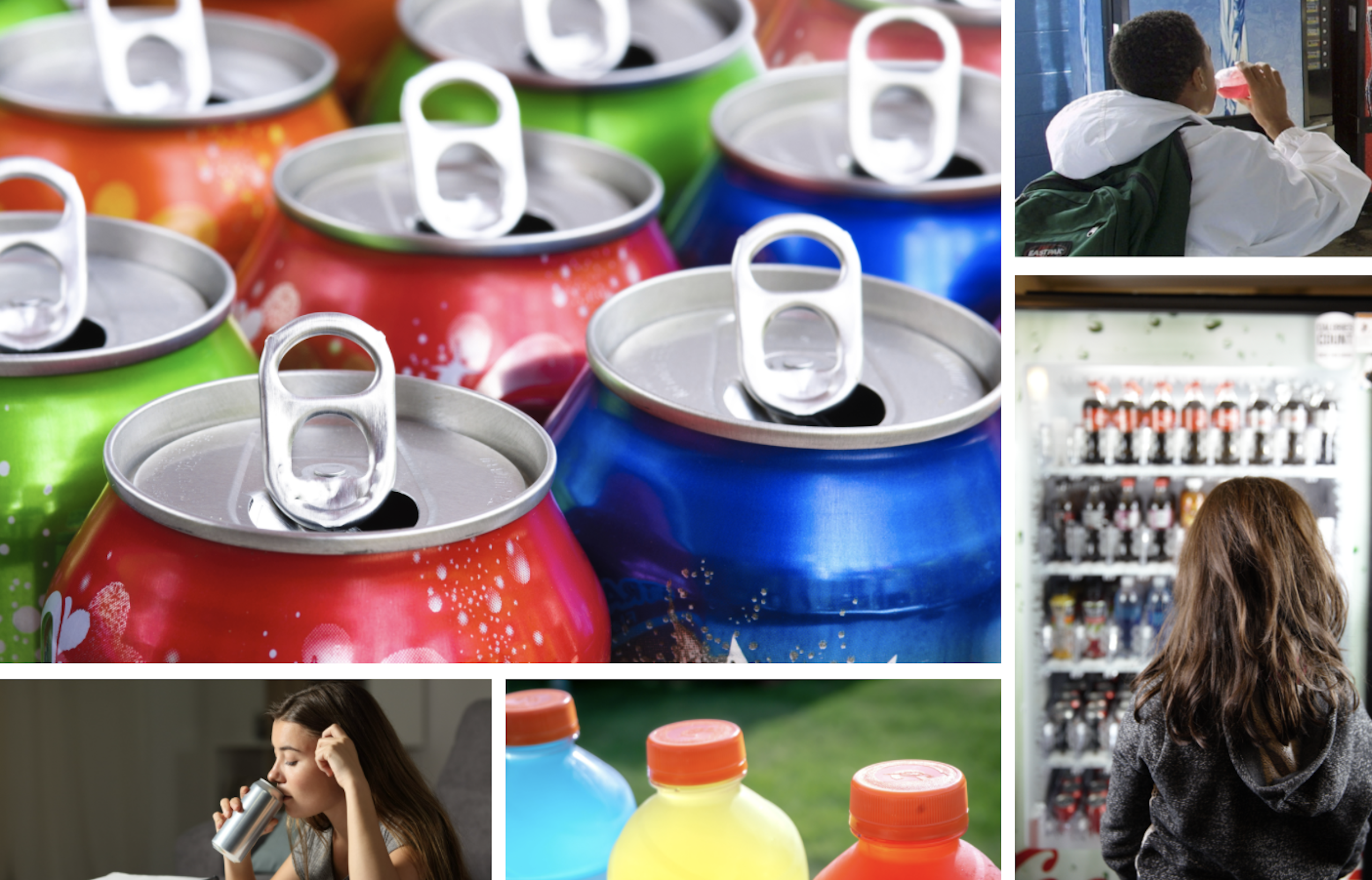Beverage companies spent $1.04 billion to advertise sugary drinks and energy drinks in 2018, a 26% increase compared to 2013, according to Sugary Drinks FACTS 2020, a new report from the Rudd Center for Food Policy & Obesity at the University of Connecticut. The report documents continued extensive targeted advertising of sugary drinks by beverage companies directed to Black and Hispanic youth, which contributes to health disparities affecting communities of color—the same communities that have been disproportionately impacted by COVID-19.
The report found that more than one-half of the total sugary drink advertising expenditures—$586 million—promoted regular soda and soda brands alone, an increase of 41% over 2013. By contrast, advertising spending for all diet and unsweetened drinks combined, including plain water and 100% juice, totaled $573 million. Advertising spending increased across a variety of sugary drink categories between 2013 and 2018—sports drink advertising increased by 24%, totaling $159 million in 2018, and advertising for sweetened iced tea almost tripled, from $38 million in 2013 to $111 million in 2018.
The report also found that companies continue to target sugary drink TV ads to Black and Hispanic youth, who have higher rates of sugary drink consumption compared to non-Hispanic white youth. Since obesity and other diet-related diseases disproportionately affect communities of color, targeted advertising of products that contribute to these negative health outcomes is especially problematic. Systemic and institutional barriers to health and opportunity also contribute to poorer health outcomes and persistent health disparities for these communities.
The report found:
· In 2018, companies spent $84 million to advertise regular soda, sports drinks, and energy drinks on Spanish-language TV, an increase of 8% versus 2013 and 80% versus 2010.
· Sports drink brands disproportionately advertised on Spanish-language TV, dedicating 21% of their TV advertising budgets to Spanish-language TV, compared to 10% on average for all sugary drinks.
· Compared to white children and teens, Black children saw 2.1 times as many sugary drink ads and Black teens saw 2.3 times as many. Black youth exposure was particularly high for sports drinks, regular soda, and energy drinks.
“Our findings demonstrate that beverage companies continue to target their advertising to Black and Hispanic communities, which exacerbates ongoing health disparities affecting those communities,” says Jennifer L. Harris, lead study author and senior research advisor at the Rudd Center. “Companies should not target communities of color with advertising that almost exclusively promotes unhealthy products and undermines efforts to improve the long-term health of young people.”
Researchers used Nielsen data to identify brands in the soda, sports drink, energy drink, iced tea, fruit drink, and flavored water categories that spent at least $100,000 in advertising and that contained added sugar—excluding children’s drinks previously examined in Children’s Drink FACTS 2019 —and reported on diet soda and diet drinks in the same categories for comparison. Researchers collected data on the nutrition quality and advertising of sugary drinks and energy drinks by category, company, and brand, while also identifying categories, brands, and companies with TV advertising targeted to teens, Hispanic youth, and/or Black youth.
Additional top-level findings:
· Teens remain a primary target audience for sugary drink advertising. From 2013 to 2018, teens’ exposure to TV advertising increased for regular soda/soda brands (+1%) and iced tea (+68%), despite a 52% decline in time spent watching TV during the same time. Energy drinks and sports drinks targeted their TV advertising directly to teens, as evidenced by high ratios of ads viewed by teens versus adults.
· Preschoolers’ and children’s exposure to sugary drink TV advertising is increasing. Preschoolers’ saw 26% more TV ads for sugary drinks in 2018 than in 2013, and children’s ad exposure increased by 8%. These increases occurred despite a 35% decline in average TV viewing times for preschoolers and a 42% decline for children during the same period.
· Sugary drink advertising was primarily driven by PepsiCo and Coca-Cola brands. PepsiCo and Coca-Cola were responsible for 38% and 31% of all sugary drink advertising spending, respectively. PepsiCo sugary drink advertising spending increased by 28% from 2013 to 2018; Coca-Cola sugary drink advertising increased by 81% during that time period.
· Four brands each spent more than $100 million to advertise sugary drinks in 2018: Coke, Pepsi, Gatorade, and Mtn Dew.
“Beverage companies have promised to take action to reduce the amount of beverage calories people consume, but at the same time they dramatically increased advertising for their full-calorie sugary drinks,” says Fran Fleming-Milici, a co-author and director of marketing initiatives at the Rudd Center. “It’s well past time for the industry to stop putting profits ahead of our kids’ health and put their advertising dollars behind products that contribute to good health rather than undermine it.”
The report authors include the following recommendations
· Beverage companies should commit to discontinue targeted marketing of sugary drinks to communities of color.
· States and localities should enact excise taxes on sugary drinks and invest the resulting revenue in community-defined programs and services to reduce health and socioeconomic disparities.
· The U.S. Food and Drug Administration (FDA) should establish regulations to address unclear labeling practices, such as requiring disclosures of added sugars, low-calorie sweeteners, juice, and caffeine content on the front of product packages.
· States and local municipalities should prohibit the sales of energy drinks and shots to children under age 18 and require they be placed in low-visibility locations (such as behind counters).
· Grassroots and other advocacy groups should develop campaigns to highlight excessive advertising of sugary drinks, especially advertising that disproportionately targets teens and communities of color.
· Health care professional organizations should develop campaigns aimed at children and teens to raise awareness about these harms, especially for sugary drinks that are perceived to be healthier than soda (e.g., sports drinks, iced tea, and flavored waters) and energy drinks.
The report was funded by a grant from the Robert Wood Johnson Foundation. The views expressed here do not necessarily reflect the views of the Foundation.



